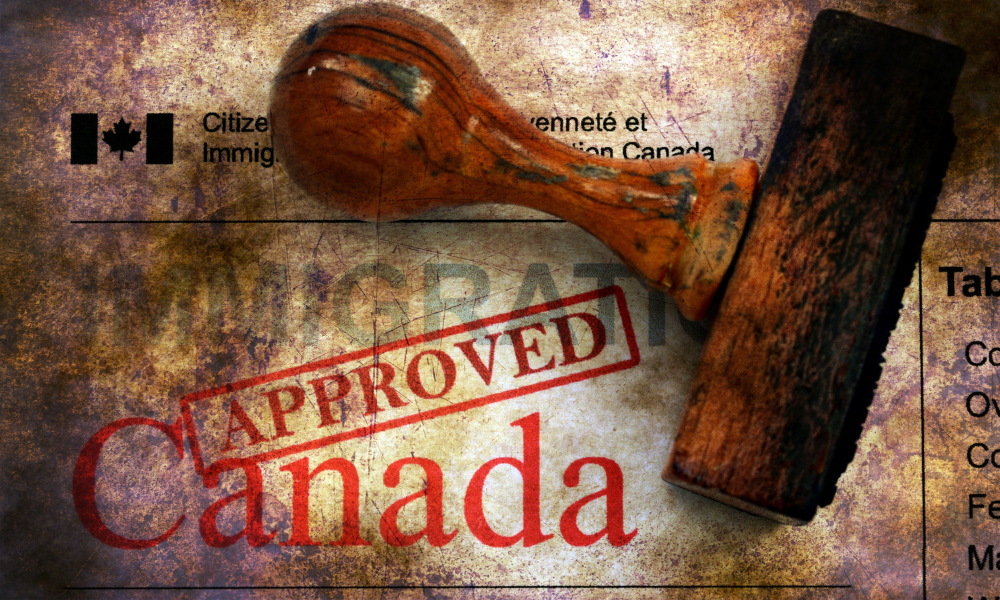What is CCUS?
Reducing CO2 remains a focus of Canada’s efforts to address climate change and help us achieve our climate targets, e.g., Paris Agreement targets by 2030, net zero by 2050. However, for some critical industrial processes, materially reducing or eliminating emissions is technically difficult or prohibitively expensive. Plus, at least for now as we undergo our clean energy transition, there are arguably no feasible carbon-free options that could eliminate the need to manufacture the products that are derived from some of these industrial processes. Oil and gas production/processing, cement making, steel manufacturing and the thermal generation of electricity are some of the industrial processes where the world, and not just Canada, is looking to reduce CO2 emissions using Carbon Capture, Utilization, and Storage (CCUS).
CCUS seeks to prevent CO2 from entering the atmosphere by capturing it at its source, using the captured CO2 if possible, and then, more importantly, permanently injecting and storing the remaining CO2 deep underground in the pore space. A CCUS project generally has three components – capture, transportation, and storage. The proposed $16.5 billion CCUS project of the Pathways Alliance – composed of Canada’s six largest oil sands producers – is an example of such a project. It would see these oil sands producers each capture CO2 that they cannot otherwise eliminate at a number of their facilities in Northern Alberta, inject it into a common CO2 pipeline, and transport the CO2 approximately 400 kms on the pipeline to a carbon storage hub near Cold Lake where the CO2 would be injected and permanently stored underground.
How does carbon pricing impact the economic evaluation of a CCUS project?
A proponent will only proceed to build a large infrastructure project, like CCUS, if it concludes that over time it will earn revenues (reap benefits) sufficient to recover its costs, including financing costs, plus earn a reasonable financial return on those costs commensurate with the project risk that will be incurred.
On the cost side of that economic evaluation equation, a CCUS project will incur significant capital costs (CAPEX) to build the project, operating costs to run the project each year, and financing costs. Driving down those costs is important if proponents are going to make positive final investment decisions for CCUS projects in Canada. And here, governments (federal and provincial) are helping. For example, at the federal level, the proposed CCUS Investment Tax Credit (ITC) will, in effect, reduce CCUS CAPEX by between 37.5% and 60% of eligible expenditures (generally equipment). In advance of COP 28, Alberta just announced that its new Carbon Capture Incentive Program will add to the federal ITC by providing a 12% grant on eligible costs associated with building new CCUS projects. Proponents of CCUS projects have also been approaching governments for additional cost subsidies, and government loans at below-market rates to reduce their financing costs. In this regard, the proponents of CCUS projects are not much different than those of other energy transition projects – whether they be hydrogen, clean electricity, or critical mineral projects.
The revenue (benefits) side of the economic evaluation equation for a CCUS project is however different than that side of the equation for other energy transition projects. This is because the revenues of a CCUS project are more directly tied to Canada’s carbon pricing system for large emitters. Under this system, large emitters (like those considering CCUS projects) generally pay a federally set price per tonne of emissions that they generate in excess of emissions thresholds applicable to the facilities that they own. More importantly, these emitters can generate carbon credits if they emit less than these emissions thresholds and then sell those carbon credits to other emitters who fail to meet their emissions thresholds.
Canada’s carbon pricing system for large emitters therefore generates two types of revenues (benefits) for a CCUS project, 1. the carbon price payments that will be avoided and saved because with a CCUS project the proponent should always meet its emissions thresholds, plus 2. the revenue that will be earned from selling carbon credits that will be generated because the proponent should always beat (not just meet) its emissions thresholds. Some proponents may also factor in that their customers will pay a premium for a low-carbon product – a so-called “greenium” – or continue to buy their product in the future when, without CCUS, they would otherwise not do so, either by choice or because the proponent would be legislated or regulated out of business. Proponents of CCUS projects in the oil and gas sector will also now have to consider the proposed federal Oil and Gas Sector Greenhouse Gas Emissions Cap (O&G Cap) that was just announced on December 7, 2023, and the proposed way in which the federal government contemplates this O&G Cap will work in tandem with carbon pricing under OBPS. However, the two big drivers currently justifying new CCUS projects in Canada are the avoided carbon price costs, and revenues earned from selling the carbon credits that will be generated by these projects.
What are CCUS project proponents worried about when it comes to carbon pricing?
Canada’s carbon pricing system is really a stew of systems, each with their own rules and carbon credit markets, which varies by province or territory (P/T). There is the federal output-based pricing system (OBPS) – that operates along the lines described above based on emissions thresholds – and an array of other P/T carbon pricing systems that the federal government has concluded meet the minimum national standards for carbon pricing and can therefore replace the federal OBPS. The result is that we have some P/Ts with their own OBPS, Quebec with a unique cap-and-trade system, and other P/Ts which use the federal OBPS because those P/Ts do not have one of their own. For this discussion, we will focus on the carbon price uncertainties inherent in OBPS – setting aside cap-and-trade – that are worrying CCUS project proponents, namely, 1. the carbon price that future governments will set for emissions over the life of their CCUS projects, and 2. the quantity and value of the carbon credits that the CCUS projects will generate.
With respect to the carbon price, which directly impacts the amount of the carbon price payments that will be avoided, the current federal government has committed to a minimum national carbon price that will rise $15/tonne each year from the current $65/tonne to $170/tonne in 2030. It has been silent about what will happen after 2030, so there is uncertainty as to whether the carbon price will stay the same or continue to gradually increase thereafter. With respect to the carbon credits, the quantity of carbon credits generated from a CCUS project will depend on the future changes that governments will make to the applicable emissions thresholds, and the value of the carbon credits will depend not only on the future carbon price, but also on whether there will be an undersupply or oversupply of carbon credits for sale in the future in the applicable carbon credit market. For example, with respect to the supply issue, if built and depending on how the proposed federal O&G Cap will ultimately impact the quantum of carbon credits that can be generated and sold under Alberta’s OBPS carbon pricing system, a CCUS project of the size proposed by the Pathways Alliance has the potential to generate a huge number of carbon credits and saturate the Alberta carbon credit market, resulting in a future carbon credit value to the oil sands producers, and other generators of carbon credits in Alberta at that time, which is significantly below the then carbon price.
These carbon price uncertainties are magnified by the lack of broad support that exists in Canada for carbon pricing, including the opposition expressed by several P/Ts. Throw in the “Axe the Tax” policy of the federal Conservative Party of Canada (Conservatives), who lead today in many polls, and an upcoming federal election that must be held before October 20, 2025, and it is no wonder that proponents of CCUS projects have been hesitant to make positive final investment decisions amid the uncertainties. They are worried that future governments (federal and P/Ts) will 1. reduce, delay increases in, or perhaps cancel carbon pricing altogether, and/or 2. make other changes to the carbon pricing system that would gut the value they need to derive in the future from selling carbon credits to support the economics of their CCUS projects.
What is a Carbon Contract for Difference (CCFD), and could it mitigate the CCUS carbon pricing risk?
A CCFD is a contract for a fixed period of time (e.g., 15 years) between government (federal and/or P/T) and a proponent of a project whereby the government agrees to compensate the proponent over the fixed period if actual carbon pricing (Market Price) is less than the agreed price set out in the CCFD that the parties are satisfied makes the particular project economic (Strike Price).
By way of illustration, for a CCUS project that simply needs assurance that the proposed federal carbon price trajectory ($65/tonne today going to $170/tonne in 2030) will be implemented and maintained after 2030, a CCFD could be structured using the currently proposed federal carbon prices as the Strike Prices. This CCFD could be structured as a one-way contract where government reimburses the CCUS project for the differential if the Market Price (as set by government) in any particular year is less than the Strike Price because a future government lowered the proposed carbon price. Alternatively, the CCFD could be a two-way contract where payments could also flow to government from the CCUS project if, ultimately, a future government increased the carbon price above what is currently proposed. That CCFD could provide a CCUS proponent with even more carbon price certainty if, instead of the carbon price itself, the CCFD fixed the future value of the carbon credits for the CCUS proponent, because such a CCFD would, in effect, result in government assuming the risk for all the uncertainties, including adverse changes to the federal carbon prices or emissions thresholds, and any potential oversupply of carbon credits in the applicable carbon market, that could depress future carbon credit prices such that they were significantly below the federal carbon prices.
A CCFD is therefore a contractual mechanism, like an insurance policy, that could be used to mitigate political/policy uncertainty when it comes to carbon pricing by promising compensation to a CCUS project for any future adverse changes to the carbon pricing system. Of course, a CCFD, and certainly several of them, would create a significant contingent payment obligation that would have to be considered before the current or a future government made changes to our carbon pricing system that adversely impacted a CCUS project.
Where do governments stand on CCFD use in Canada?
Though P/Ts have been quiet on their use of CCFDs, the federal government has signaled a willingness to use CCFDs to address carbon price uncertainty. First mentioned in its 2022 Emissions Reduction Plan as a tool to “help guarantee the price on pollution”, contracts for difference were then included in the broad suite of investment instruments that can be deployed by the Canada Growth Fund (CGF), a new $15 billion federal decarbonization investment fund created this year. The just released 2023 Fall Economic Statement (FES) reiterated the federal government’s willingness to use CCFDs to provide carbon price certainty:
One of the financial tools the Canada Growth Fund is providing to support clean growth projects is contracts for difference – including contracts on the future price of carbon. Carbon contracts for difference will backstop the future price of carbon and provide predictability to businesses in order to de-risk important emission-reducing projects.
The FES went on to announce that the CGF will be the principal federal entity issuing CCFDs and will allocate up to $7 billion of its current $15 billion of capital to issue all forms of contracts for difference and offtake agreements.
However, the FES appears to dial back earlier suggestions in Budget 2023 that the federal government was considering a broad-based approach to CCFDs in addition to the bespoke CCFDs that may be done by CGF. The FES cites concerns that such contracts, and their resulting contingent liability, could expose the government to significant fiscal liability that would have to be accounted for up-front in the government’s financial statements. Instead, besides the bespoke CCFDs that CGF may be able to do with its envelope of funds, the FES implies that the government is pivoting away from broad-based CCFDs and is instead looking for legislative or joint federal-P/T approaches to provide carbon price certainty. The FES also reiterated a federal commitment to ensure that the OBPS of the P/Ts “preserve a marginal price signal at or above the minimum national carbon pollution price”, meaning that P/Ts need to pay close attention to their carbon markets and amend the rules from time to time, including changing emissions thresholds, to ensure that the price sellers receive for their carbon credits tracks the carbon price, e.g., no oversupply of credits.
What to watch for next?
Carbon price uncertainty is preventing several energy transition projects from receiving a positive final investment decision, especially CCUS projects whose economics are underpinned by avoided carbon price costs and future revenues to be earned from selling the carbon credits that will be generated by these projects. At the same time, 2030 is closing in on us and, even once green lit, the projects will take time to permit, build and commission. Plus, projects in other countries are moving ahead, so project delay in Canada due to carbon price uncertainty is hurting our competitive position on the world stage, as capital, talent and promising technology gets deployed elsewhere in the world. Time is not on our side.
CCFDs are a tool that could be used to remedy the uncertainty, but it is not reasonable to expect the federal government to take on the related contingent liability by itself. Yes, we can expect to see CGF execute bespoke CCFDs, but the earmarked $7 billion, though a lot, is not enough money when measured against the aggregate contingent liability that would arise if CCFDs were done at scale.
As the FES indicated, joint federal-P/T approaches are needed to solve the problem. P/T participation makes sense because, as noted above, the carbon pricing systems, including the carbon markets, are generally provincially administered. Also, provinces like Alberta and Saskatchewan, with the geology that is needed to effectively store CO2 underground, are home to many of the industrial processes that need CCUS, so these provinces have a significant financial interest in remedying carbon price uncertainty. Finally, these provinces have conservative governments, so even if a future federal Conservative government did away with federal carbon pricing, there is nothing preventing these provinces from committing to maintain carbon pricing, at least at the large emitter level that is incenting proponents to build CCUS projects. For Alberta, this is not as big an ask as it may first seem because that province has had a provincial carbon levy on large emitters since 2007, well before federal carbon pricing was even implemented.
We will continue to monitor the carbon price uncertainty issue and to work with clients looking for mitigation solutions, including the use of CCFDs, that could work for government and project proponents. We will update you on new developments in this important area as they arise.
--
 Sonya Savage, senior counsel, is a leading advocate in the energy industry. Her extensive public, corporate and private practice experience provides a unique and valuable perspective for our clients.
Sonya Savage, senior counsel, is a leading advocate in the energy industry. Her extensive public, corporate and private practice experience provides a unique and valuable perspective for our clients.
Sonya served as a Senior Minister for four years in the Alberta Government. Most recently, she held the position of Minister of Environment and Protected Areas and was also the Minster of Energy and Minister of Justice. Previously, she worked in the corporate sector as a senior executive for the Canadian Energy Pipeline Association and Enbridge. She earned a Master of Laws (LLM) in 2015 with a published thesis on the evolving role of the National Energy Board. She also worked in private practice as a litigator for 13 years.
Navigating and balancing energy security and climate interests in an evolving and often contentious political landscape lends to her expertise in energy and environmental law, energy policy, regulations and climate strategy.
 Alan Ross, Regional Managing Partner, Calgary, practises administrative and regulatory law, representing energy clients in national and provincial regulatory proceedings. He has significant experience in the areas of pipeline transmission, oil and natural gas, renewables and electricity.
Alan Ross, Regional Managing Partner, Calgary, practises administrative and regulatory law, representing energy clients in national and provincial regulatory proceedings. He has significant experience in the areas of pipeline transmission, oil and natural gas, renewables and electricity.
He also helps clients from all industries navigate the laws around international trade. He has experience resolving disputes involving USMCA and the Canadian International Trade Tribunal.
In the energy sector, Alan’s practice focuses on hydrogen, carbon capture, energy transition technologies and sustainable infrastructure. In addition, Alan has significant experience with regulators in the U.K., E.U., and the U.S. Federal Energy Regulatory Commission. He has represented clients before the Canada Energy Regulator (formerly known as the National Energy Board), as well as provincial regulators, including:
- the Alberta Energy Regulator;
- the Alberta Utilities Commission;
- the British Columbia Utilities Commission; and
- the Ontario Energy Board.
In addition to his practice, Alan is the Regional Managing Partner of BLG’s Calgary office.





